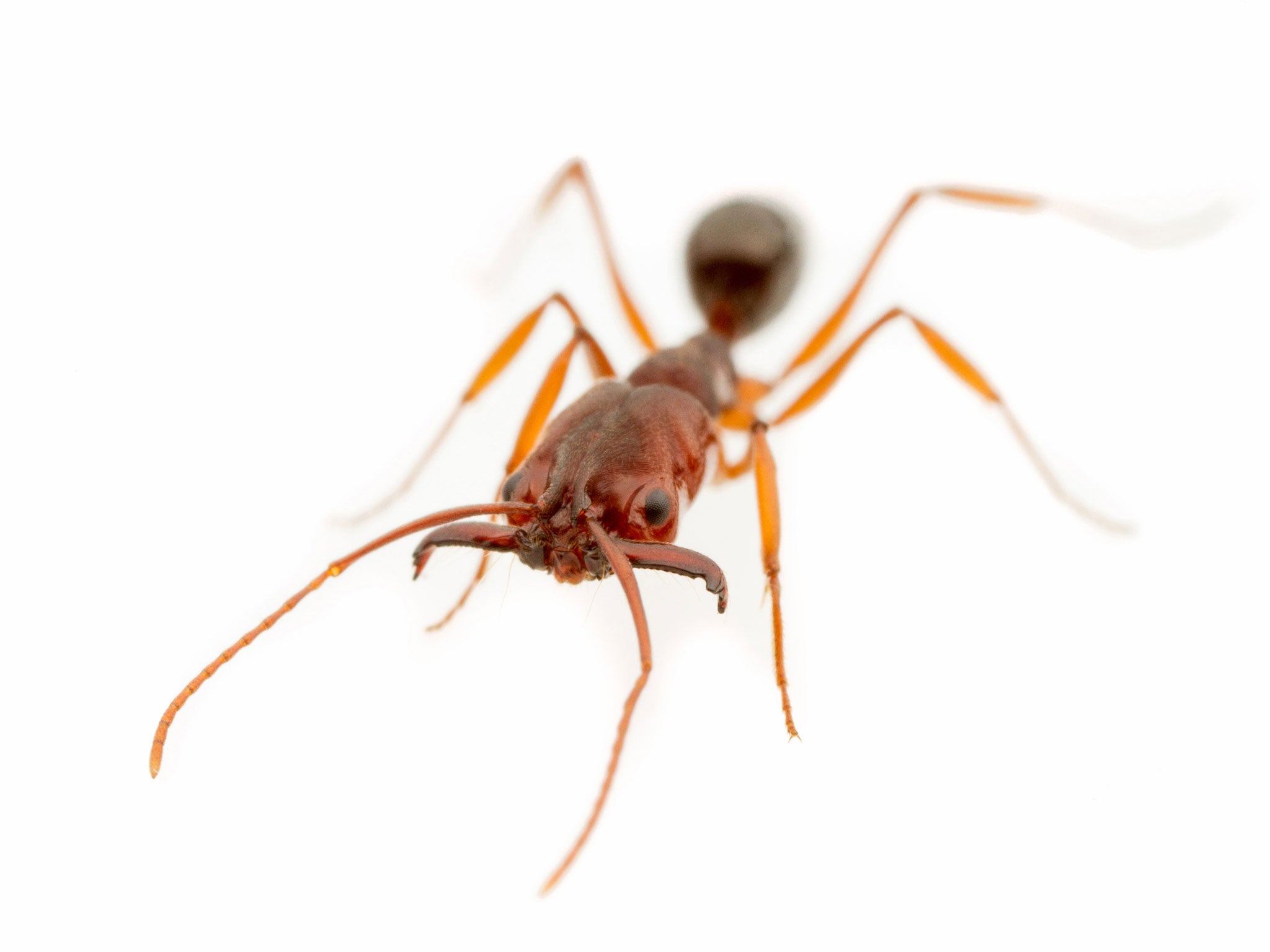Venomous trap-jaw ants 'invading' US Gulf Coast 'without scientists noticing'
The ants, which have jaws powerful enough to fling themselves in the air, may have been hiding in the US for 50 years

An aggressive species of trap-jaw ant have managed to quickly expand their territory across the Gulf Coast of the US “without anyone noticing”, researchers have found.
The Odontomachus haematodus are a species of hunting trap-jaw ants with venomous stings and jaws powerful enough to fling themselves through the air.
They are typically found in South America, but are now spreading into new territory in southeastern America, scientists at the North Carolina State University, the Mississippi Entomological Museum, the University of California, Davis and Archbold Biological Station have reported.
The haematodus has proved particularly intriguing for the researchers out of the Odontomachus genus, because it is larger and more aggressive than other types of trap-jaw ants in the US.
Magdalena Sorger, a doctoral student at North Carolina State University, said: "The fact that some of these species are spreading is interesting, in part because these giant ants have managed to expand their territory without anyone noticing.
"We know very little about these ants, including how they interact with native ant species in the areas they're invading."
The species was first unofficially recorded in Alabama in 1956. But the researchers found it has now spread across the Gulf Coast, at least as far east as Pensacola, Florida.
Sorger has confirmed a record of ruginodis more than a hundred miles north of Orlando, in Gainesville. She added: “The species could have travelled even farther than Gainesville, but no one has looked for it.”
The study, ‘A review of the Nearctic Odontomachus (Hymenoptera: Formicidae: Ponerinae) with a treatment of the males,’ has been published in the journal Zootaxa.
Join our commenting forum
Join thought-provoking conversations, follow other Independent readers and see their replies
Comments
Bookmark popover
Removed from bookmarks